Many growers of old thought little of the flowers on their hostas and made it a practice to cut the flower scapes before they flowered so as not to detract from the gorgeous foliage. A few still behead their hostas to this day.
Thanks to hybridizers that produce thousands of hostas to find the ONE, flower colors have expanded from lavender and white to include purple, yellow, flowers that hint of pinks and reds. Picotees are starting to appear.
There are big, beautiful, fragrant flowers in more colors than white. Flower scapes that match the size of the plant, removing the old ungainly look.
Hosta flowers are going from ho hum to exciting, with even more beautiful flowers on the horizon.
Every hosta plant will grow flowers, and it can be a fancy affair (I know of one cultivar that does not flower, but that is a story for another day).
During the summer months, I look for my hostas to produce spikes of blossoms. They look a little like lilies, and white or lavender are popular colors. They have bell-shaped blooms that can be very fragrant and showy, and they attract a lot of hummingbirds and bees to my yard.
Some newer cultivars give you up to 75 flowers on every stem, and they sit high above the lush mounds of foliage.
When Do Hostas Bloom
When your hostas bloom will depend largely on the type of hosta you have. On one hand, this is nice if your someone who likes hosta blooms and wants to stagger the bloom time from the spring to the fall.
On the other hand, if your someone who doesn’t like the flowers, this can be a hassle to go out and deadhead the spent flowers several times throughout the growing season.
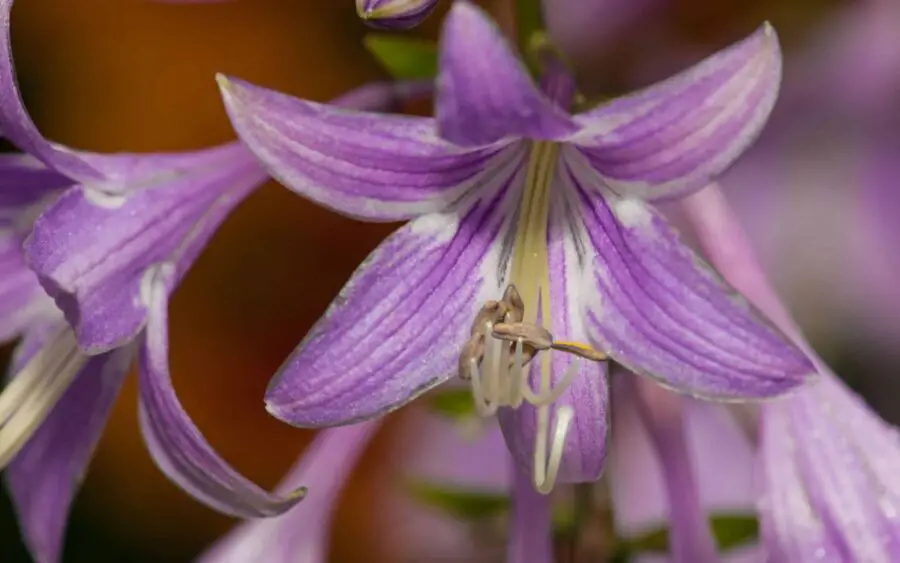
Generally , you can divide hostas up into early blooming and late blooming species. If you’re like me and you live in a cooler northern climate, early blooming hosta varieties, which is the most common group, will start in mid-June before going into early July. Later-blooming and more fragrant hostas bloom in August until the first frost.
Early Flowering
Brother Stefan
After Midnight
Cinderella
Spilt Milk
Frost Giant
Empress Wu
Mini Skirt
Late Flowering
plantaginea
Fragrant Bouquet
First Blush
Honey Do
Fire Island
Old Faithful
Stained Glass
How Long do Hostas Bloom
Hosta flowers will bloom around three weeks from the first spike of flowers until they die back. Depending on the cultivar, this can start as early as May and go as late as September. During the blooming season, you’ll get spikes of flowers in a host of different colors.
The flowers sit above the mounds of glossy leaves, and many people think it creates a nice ornamental look. The blooming time for these flowers is so short because each bud will only last for a single day before it dies back and turns brown.
So, it’s easy to have new and dying or dead flowers on the same stalk if you’re not quick enough to get rid of them.
Do all Hostas Flower
Yes, every hosta plant will grow flowers if they have the correct growing conditions and enough nutrients.
Some people see hosta flowers as a fancy way to add height with a little color to the shaded areas of their yard, while other people see them as a distraction from the lush foliage’s coloring and looks.
There are some hosta cultivars and species that are re-bloomers. This means that they can bloom more than one time during a growing season.
This is particularly true if you go out and cut the first flush of scapes off right to the ground level after they flower for the first time. They won’t bloom again on the same scape, so the plant will have to grow a new one.
Are There More Colors of Hosta Flowers than Lavender
I enjoy looking at the softer lavender color that seems to dominate most hosta plant coloring, but there are other colors available. White and purple are the other two extremely popular flowers.
Then there are some hosta enthusiasts will even breed the purple flowered hostas to get darker coloring.
Hostas with White Flowers
I love splashes of white in my shady areas of the yard, and the white flower spikes can help offset some of the darker colorings on the plant’s foliage.
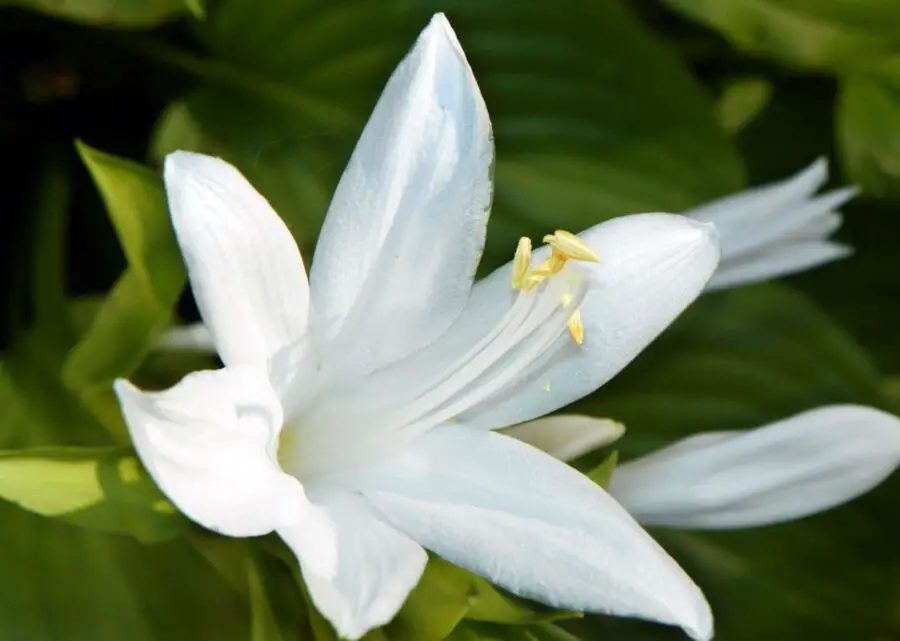
Hosta plantaginea is one white flowered hosta that grows flowers that are an impressive six inches long. They’re pure white, and they like to open during the early afternoon hours around four pm. Other white flowered hostas include:
Aphrodite
August Lily
Fragrant Bouquet
Royal Standard
Avocado
Hostas with Purple Flowers
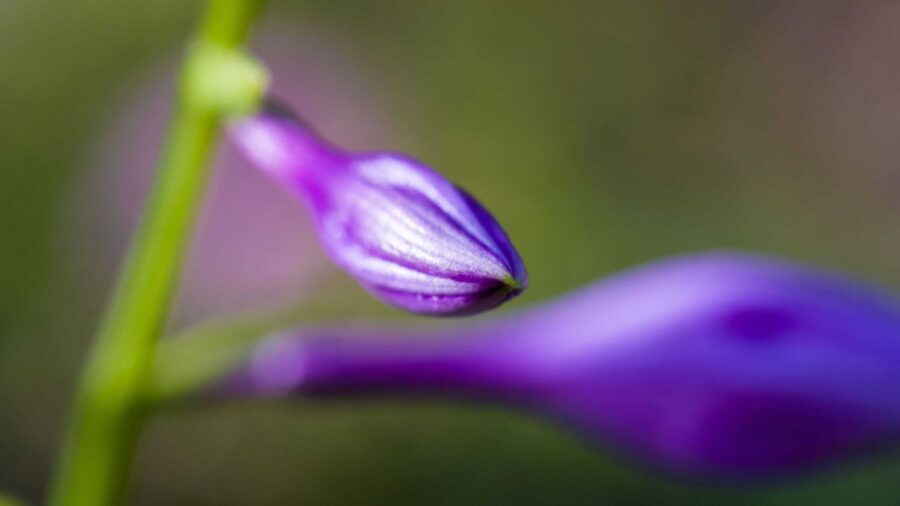
Most of the purple flowers verge on a light lavender coloring. Hosta enthusiasts typically call purple flowered hostas dark flowered hostas. You can get them in a range of purple hues, but lighter lavender is the most popular. A few hostas with purple flowers include:
Fragrant Blue
Honeybells
Sweet Susan
Fragrant Queen
Bachelor Party
Yes, There Is a Yellow Flowered Hosta
Surprisingly enough, there is a yellow flowered hosta you can add if you want a slightly brighter pop of color. I like how it looks when I put it next to hostas with darker foliage because the color really pops.
The Miracle Lemony Hosta has a lighter, creamy yellow coloring with brighter green foliage and textured leaves. This newer hosta also emits a light fragrance that can attract hummingbirds. It can get between 12 and 14 inches tall, and it’ll bloom in the midsummer months.
Hostas with Red Flowers
There are no true hostas with red flowers. However, hosta enthusiasts have created hybrids that have a reddish-hue on their flowers or soft red streaks surrounded by white.
The Black Cat, Edgar Allan Poe II, Premature Burial, and Crime and Punishment are examples of hostas with a red hue or stripes in the flower.
Hostas with Blue Flowers
Just like with the red hosta flowers, there are also no true blue flowers. There are a few rumored hybrids out there that have very pale purple-blue coloring to them.
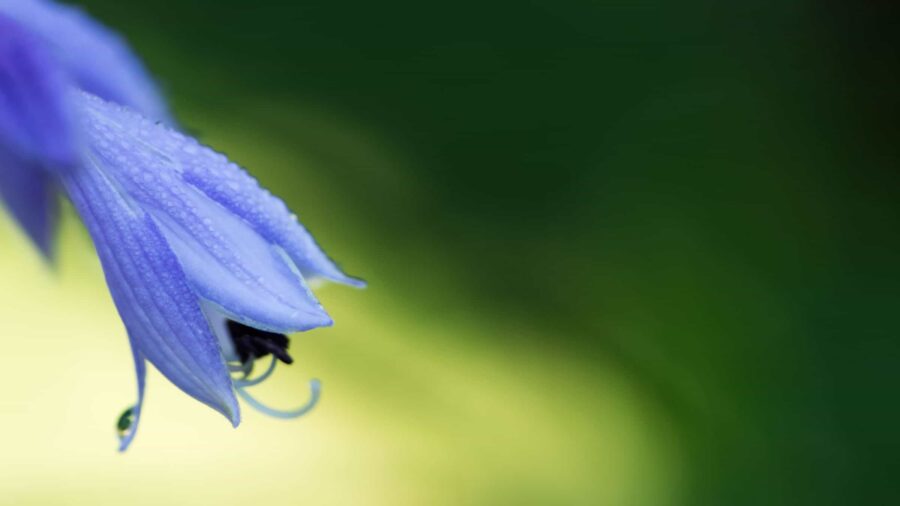
It’s a periwinkle shade, and you can find it under Lederhosen Hostas. It also reported Oshima Silk and Winfield Blue to have purple-blue flowers.
Unusual Hosta Flowers
While it’s true that many hostas are one color throughout, it rumored some to have a picotee edge to them. All this means is that the petals come with a darker margin to the inner coloring, and this can help offset the flowers a little more.
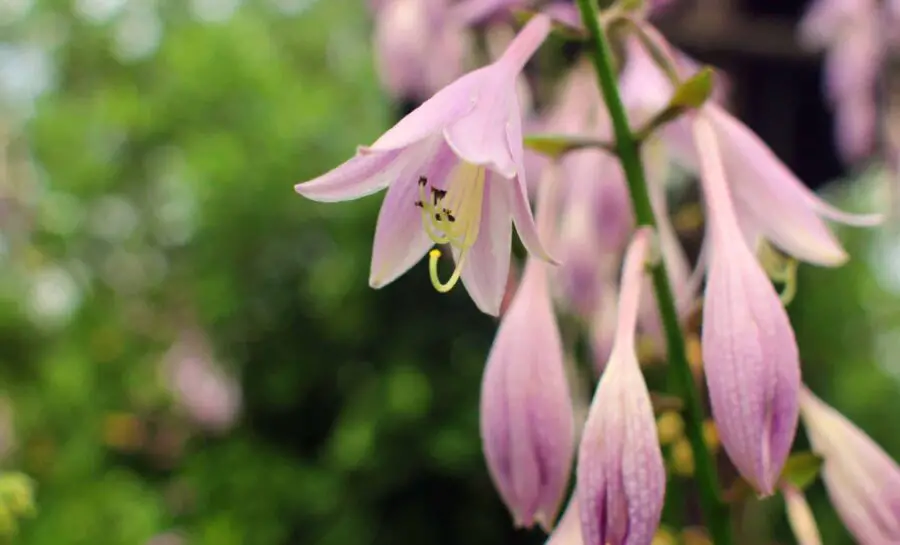
So, you could have a light lavender coloring with a darker purple coloring running along the edges. Awakening Angel, Fresh Prince, Beyond Glory, Otter Point, Old Glory, and Glory are all examples of hosta flowers with a picotee edge.
Another unusual type of hosta flower is the closed-edge variety. What this means is that the flowers don’t open up like normal hostas. Instead, you get the normal flower spike with small rounded balls along it that sits atop the plant.
A few examples of this type of hosta would be Tiny Bubbles, Paper Lantern, Purple Lady Fingers, Saketini, and Ruby.
During the 1980s, when a double flowered Hosta plantaginea was imported into the United States and it was wildly popular for the double flowers it produced.
It’s also a very fragrant plant, and each bud has a very full look because of the extra petals. Examples of this type of hosta include Aphrodite, Karen’s Delight, Poseidon, Royal Oyster, Peacock Feathers, and Yea.
Finally, you can get spider-flowered hostas. These hostas grow very narrow-petaled flowers with a tight funnel shape. Most of these hostas come related to H. yingeri and H. laevigata.
The flowers are unique, but they can be underwhelming. If you want these types of flowers, plant Academy Mirkwood, Gentle Spirit, Lily Pad, Quill, or Whisky Sour hostas.
Fragrant Hostas
Although it may have gone out of style for a few years, fragrance is making a big comeback in today’s gardens. I know I love walking out in my yard and smelling all the sweet scents the flowers give out, and the pollinators like bees and hummingbirds love it too!
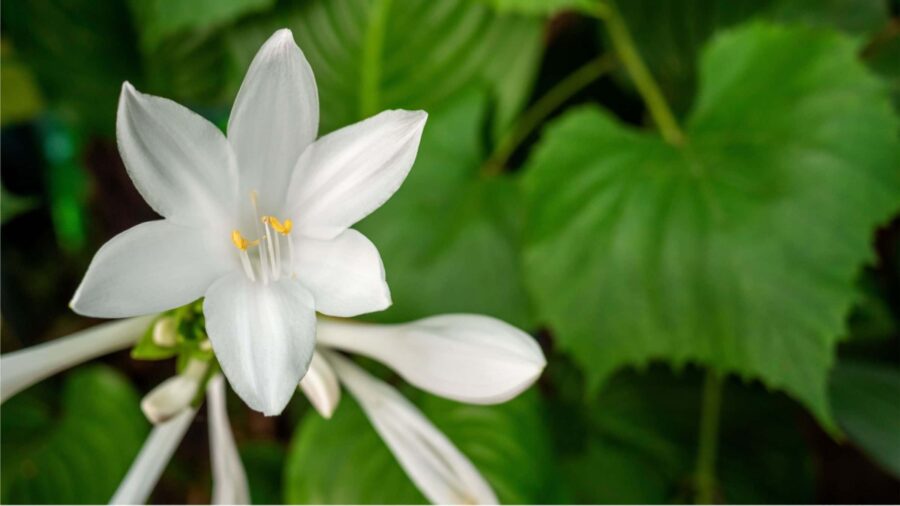
Currently, there are over 250 different cultivars of fragrant hostas available at a rough estimate. It’s difficult to say how many there really are, but you’re spoiled for choice.
If you’re like me, you can mix and match colors and hues with different fragrances to create a paradise for any pollinators around your yard or garden. To learn more visit our article Fragrant Hostas Stunning Beauty for Your Garden. A few types of fragrant hostas include:
Aphrodite
Iron Gate Delight
Summer Fragrance
Summer Fragrance
Emily Dickinson
Honeybells
Hosta Flower Scapes
Better known as flower spikes or stalks, these are the parts of the hosta that grow up from the middle of the plant and form the flowers. They add height to your landscape, but they can also distract from the pretty hosta foliage, depending on which side of the debate you fall on.
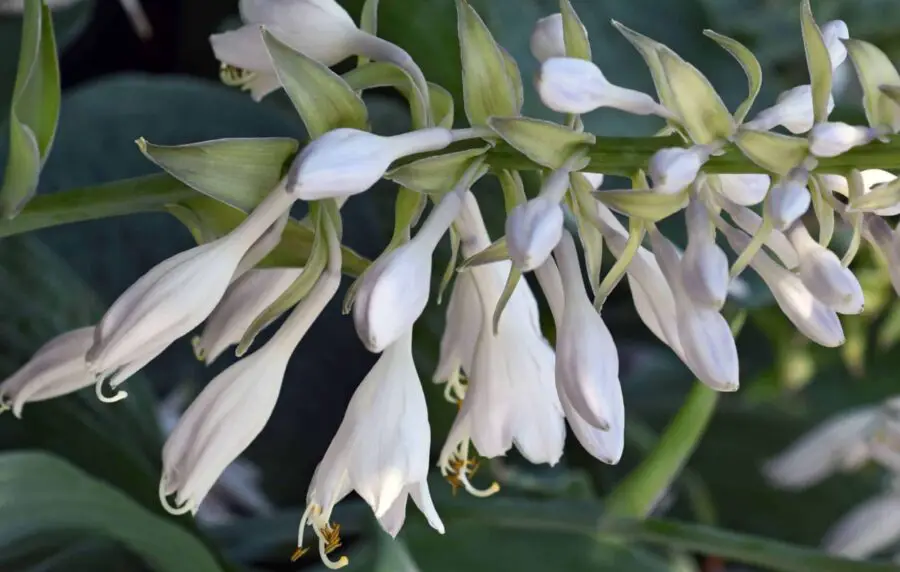
The flower scapes draw some of your plant’s energy away from the foliage, but they can produce larger and fragrant blooms.
Hosta flower stalks of today are far more than in your grandmother’s garden and they have a bright future as hybridizers turn their talents on them.
Today with some searching you can find branched, fascinated, short, very tall, whorled and even colored flower stalks.
What Creatures Do Hosta Flowers Attract?
One bonus for keeping hosta flowers and not beheading them is that they can attract pollinators to your yard.
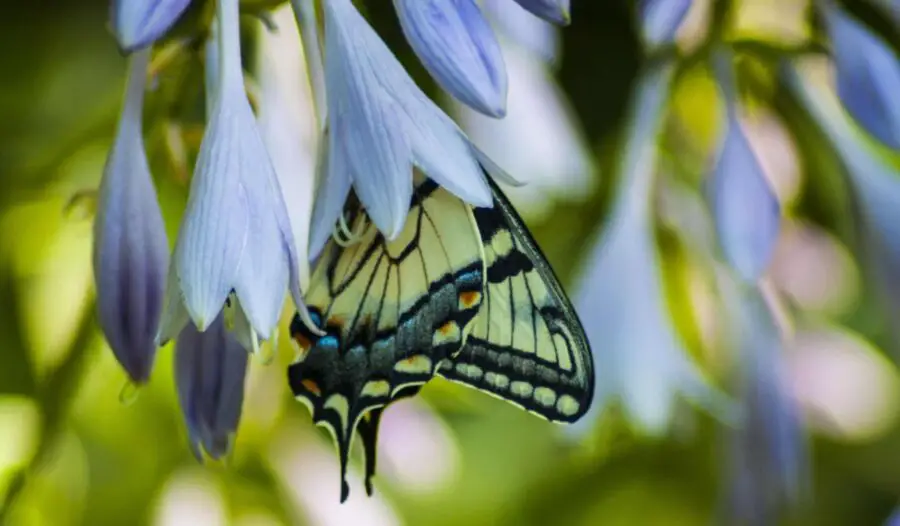
These pollinators are good for all of your plants, and they can help to ensure that your plants live on. I like to sit and watch the bees and hummingbirds bustle about when all of my plants are in bloom.
Bees
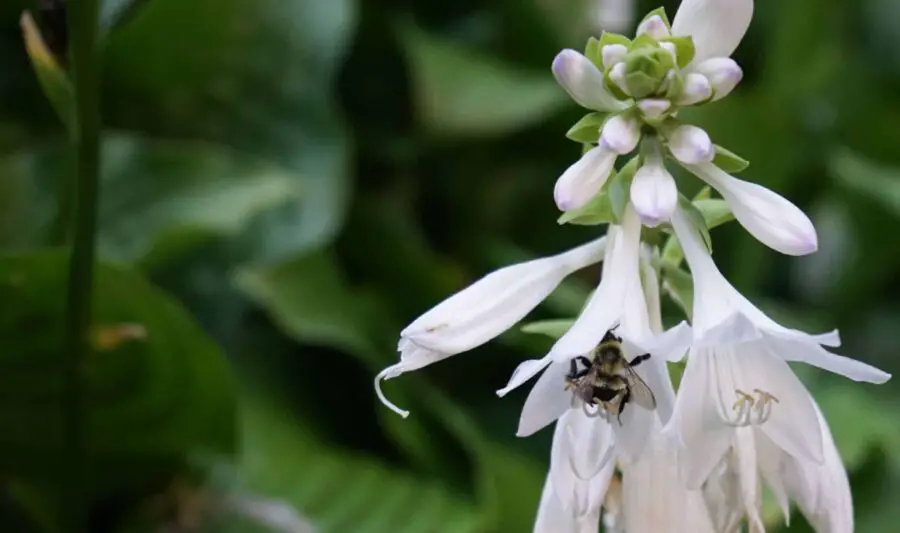
Bees love hosta flowers, especially the more fragrant varieties. If you have a sunny vegetable or flower garden, hostas give the bees a cool and safe spot to feed and rest. The hosta blooms will also encourage the bees to come in and pollinate your other plants or vegetables.
Birds
Hosta varieties that have larger leaves will catch and hold water drops in the flower folds or on the leaf surface. These drops of water are an excellent way for birds to rehydrate as they move around your yard. Birds like to eat the hosta seed heads, so they’ll move from plant to plant.
Hummingbirds
Hummingbirds add a cheerful element to your yard or garden, and they’re very attracted to hosta flowers (or any flowers for that matter!)
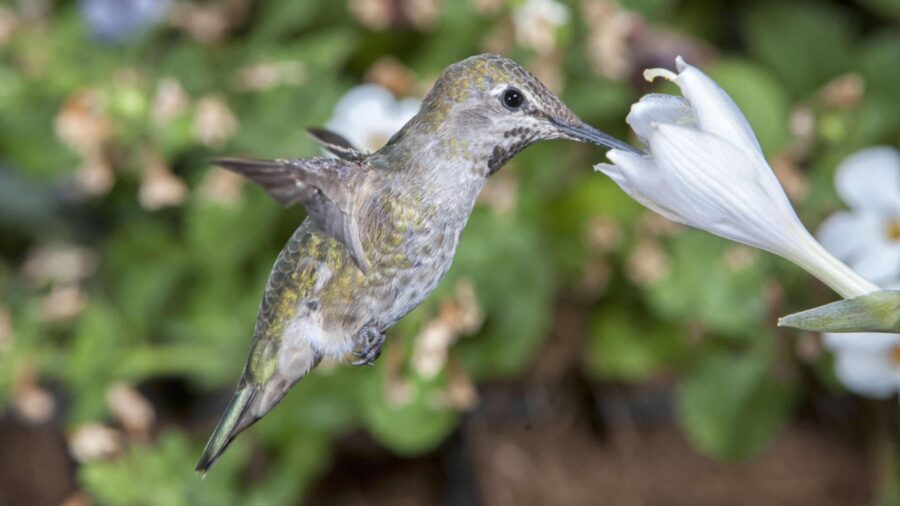
While hummingbirds can go for any flower, they like funnel or bell-shaped flowers the best because they have slender, long beaks and tongues that fit down into the plant to get at the nectar.
This is a significant food source that will keep them around your yard as long as your plants are blooming.
Hosta Flowers as Decorations
You can use hosta flowers and scapes as decorations. The hosta’s leaves come in a broad range of colors, textures, and sizes, so it makes beautiful greenery for flower arrangements.
Also, the foliage looks wonderful by itself in a bowl or vase of water on your table as a centerpiece. They’ll last for a long time if you keep the water levels up.
To decorate with the hosta flowers, cut the scape when there are only two flowers open. You can place them in a vase of water or in a flower arrangement.
They’ll slowly open and provide you a showy decorative element over the next two weeks. Once the blooms fade, gradually snip off the scape to keep the rest of the flowers healthy and let them continue to open.
To keep your cut hosta foliage or scapes looking nice for as long as possible, top of the water levels every other day or so. You don’t want it to run dry.
You can add a food packet to the water to encourage them to last longer, but you should not add nutrients like a fertilizer. Nutrients can produce bacteria that block the flower stem.
So, when in doubt, add flower food. There is sugar and a bactericide in the flower food that will help you feed your plants while prohibiting bacteria growth. Floralife and Chrysal are great brands that give your hostas a nice balance of nutrients and bactericide.
Closing Thoughts
It has grown more difficult to produce hosts with beautiful new leaf patterns and colors, making advances slower.
However, we are just scratching the surface in flower improvement. So, I expect to see rapid advances in producing hostas with gorgeous flowers.